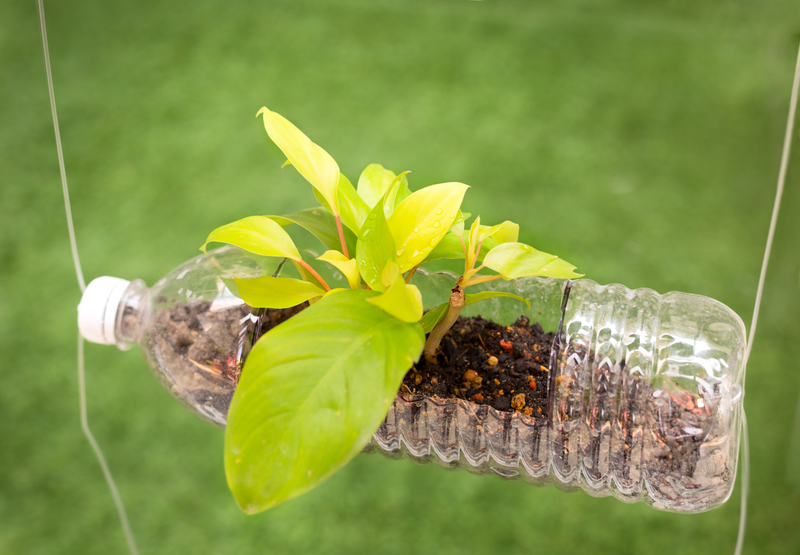Explore Methods for a More Eco-Friendly Home Environment
Creating an eco-friendly home is not only beneficial for the planet but also for your health and your wallet. By incorporating sustainable practices and green technology, you can significantly reduce your carbon footprint while also enjoying a healthier living space. This article will explore various methods to achieve a more eco-friendly home environment, highlighting practical steps and innovations you can implement to make your home a greener space.
Understanding the Importance of Eco-Friendly Living
The need for more sustainable living practices has never been more critical. With climate change, deforestation, and pollution affecting our planet at unprecedented rates, adopting a more eco-friendly lifestyle can help mitigate these global issues. Moreover, living sustainably can lead to substantial savings on energy bills and improve your home's indoor air quality, contributing to overall better well-being.
Advantages of an Eco-Friendly Home
Here are some significant benefits to consider when aiming for an eco-friendlier home:
- Energy Savings: Reduced energy consumption lowers utility bills.
- Healthier Living Environment: Improved air quality and reduced exposure to harmful chemicals.
- Increased Home Value: Eco-friendly features can increase a property's market value.
- Environmental Preservation: Reduced carbon footprint contributes to a healthier planet.

Practical Steps to Achieve an Eco-Friendly Home Environment
1. Energy-Efficient Appliances
Using energy-efficient appliances is one of the simplest ways to reduce electricity consumption. Look for products with the ENERGY STAR label, which indicates compliance with energy-saving standards set by the U.S. Environmental Protection Agency.
- Switch to LED Bulbs: Replacing traditional incandescent lights with LED bulbs can save energy and last longer.
- Eco-Friendly Thermostats: Smart thermostats help optimize heating and cooling, reducing unnecessary energy use.
- Energy-Saving Washers and Dryers: Use appliances that require less water and electricity.
2. Renewable Energy Sources
Adopting renewable energy sources is a powerful step towards sustainability. If possible, consider installing solar panels or investing in green energy options provided by your utility company.
- Solar Panels: They can significantly reduce reliance on non-renewable energy and provide long-term savings.
- Wind Energy: If feasible, small wind turbines can also be an option for residential areas.
3. Water Conservation Techniques
Conserving water not only helps the environment but also reduces utility bills. Implementing water-saving techniques around the home is simple and effective.
- Low-Flow Fixtures: Install low-flow showerheads and faucets to reduce water use.
- Drought-Tolerant Landscaping: Opt for native plants that require less water.
- Rainwater Harvesting: Collect rainwater for gardening and outdoor cleaning purposes.
Eco-Friendly Building Materials and Home Design
1. Sustainable Building Materials
When constructing or renovating, choose materials that produce less harm to the environment. Some of the best options for sustainable building materials include:
- Bamboo: A highly renewable material due to its rapid growth.
- Recycled Steel and Wood: Utilizes waste materials, reducing deforestation and excess mining.
- Cork and Linoleum: Natural materials that are biodegradable and recyclable.
2. Eco-Friendly Home Design Concepts
Home design plays a crucial role in energy efficiency and eco-friendliness. Implement these strategies for a sustainable home environment:
- Passive Solar Design: Utilize large windows, skylights, and strategic placement of trees to maximize natural light and heat.
- Greywater Systems: Recycle water from baths and sinks for landscape irrigation.
- Green Roofs: Integrated plants on rooftops provide insulation and reduce rainwater runoff.

Reducing Household Waste: Minimize and Recycle
1. Reducing Plastic Use
Plastics are a significant environmental concern. To reduce plastic waste, consider the following tips:
- Use reusable bags, bottles, and containers.
- Buy in bulk to minimize packaging waste.
- Avoid products with excessive plastic packaging.
2. Composting
Composting is a natural process that turns organic material into nutrient-rich soil. It's an excellent way to reduce organic waste from your kitchen and garden.
- Start with a dedicated bin for compost materials such as vegetable peels, coffee grounds, and eggshells.
- Mix with grass clippings and leaves for optimal breakdown.
By analyzing these various methods and continually seeking out new eco-friendly solutions, you are not only creating a healthier living space for yourself and your family but are also contributing to a healthier planet.
Conclusion: Your Path to a Greener Home
Transitioning to a more eco-friendly home environment involves making conscious choices that collectively have a positive impact on the planet. Whether you choose to minimize energy use, conserve water, or incorporate sustainable building materials, every little step counts. As you adopt these practices, you'll find that living sustainably is not only feasible but rewarding.
Ultimately, cultivating an eco-friendly home isn't just about the individual changes you make; it's about fostering a mindset that values sustainability and environmental responsibility. The planet braces for challenges with every choice made today, shaping a sustainable future is indeed possible and within reach.